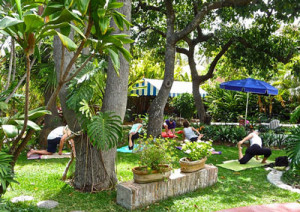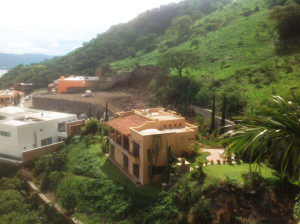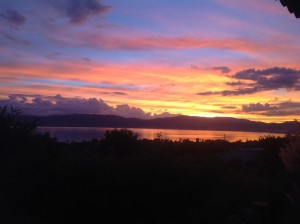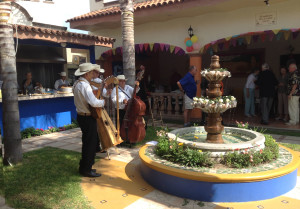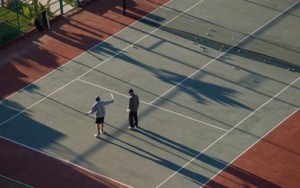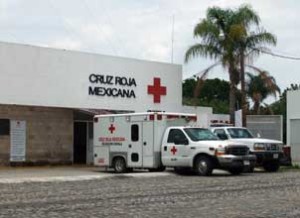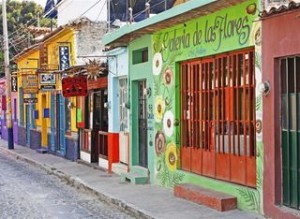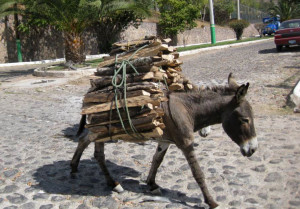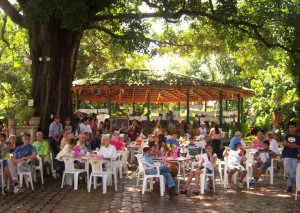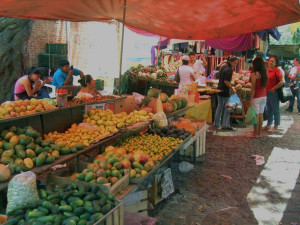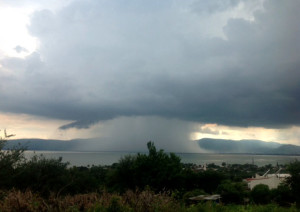I first visited Ajijic in 1996 as part of International Living’s “Retire in Mexico” conference in Guadalajara. What was once a sleepy little fishing village located on Mexico’s largest lake, and discovered in the 1940s by only a handful of artists and writers (including D.H. Lawrence) is now reputedly the largest US/Canadian expat area in the world.
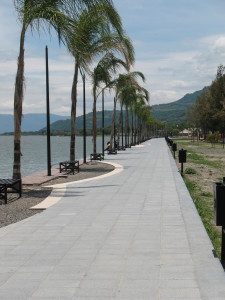
This is thanks, in part, to the feature articles in Time Magazine, AARP, The Wall Street Journal as well as newspaper features and TV specials. As the baby boomers near retirement age, they are looking for a place where they can get more bang for their precious bucks and live in comfort.
Located In central Mexico, just 45 miles south of Guadalajara, Lake Chapala is the largest lake in Mexico. It is 5,000 feet high and measures 55 miles long by 15 miles wide. Surrounded by mountains, its natural light and near perfect weather attract people from around the world. Several villages dot the north and south shores of Lake Chapala and it’s estimated that the population on the north shore of the lake is 90,000 with 10,000-15,000 full and part-time expats.
Think of the Ajijic area as having Mexico’s best five “C’s”: Climate, Cost of Living, Culture, Charm and Community:
Climate
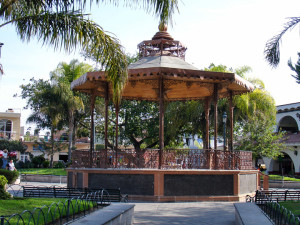
The temperature averages 75° F during the year. We don’t need central heating in the winter or air conditioners in the summer; fans handle the warmer weather in April and May. Locals love the rainy season best. Typically we get thunder and lightning shows in the evening and it’s sunny during the day. Tradition has it that the rains will start six weeks after the rain birds (cicadas) begin their mating calls. Generally the season lasts from mid-June to late September. Then the dust is settled, the mountains turn verdant green and the flowers, trees and shrubs adorn our gardens with vivid colors.
Cost of Living
Just as it does north of the border, the cost of living continues to creep up annually. It’s as difficult to answer the cost of living question here as it is in Austin or San Francisco. It depends on your lifestyle. There are single American retirees who manage to live comfortably with only their social security.
Probably they don’t have pets or cars, don’t eat out a lot and their travel is limited. On the other hand, couples can live comfortably on $2,000 a month and, in fact, it’s hard to spend more than $5,000 per month as a couple regardless of your lifestyle. It’s more expensive to live in Ajijic than in Chapala and you can live on significantly less in Jocotepec or on the south shore.
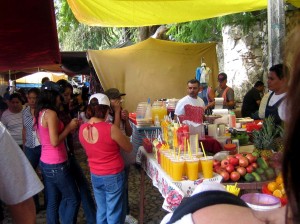
We hire maids and gardeners for $3.00-$5.00 US/hour. Property taxes for a $300,000 home run about $125-150 US and most of us don’t opt for homeowners’ insurance because bricks and mortar don’t burn and we have no natural disasters here. Doctor visits range from $25 to $50 US and for those on a strict budget, IMMS (social medical insurance) runs about $350 US per year. Meals at the better restaurants average about $15-$25 and a glass of wine will set you back about $4.00.
Culture
Many of us agree that Lakeside living reminds us of life in the 50’s. Children play outside and ride their bikes to school, feeling completely safe. Neighbors watch out for each other. Extended families celebrate holidays together with picnics or potlucks. The Mexican value system is family first, church second, job third and possessions last. When a worker doesn’t show up as scheduled, it’s likely that a cousin’s girlfriend needed a ride into Guadalajara. That’s more important than the job.
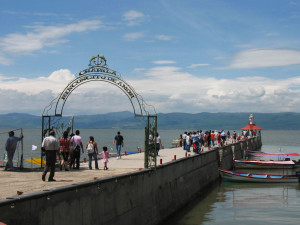
You’d think they would call and explain why they won’t be able to work, but another interesting facet of the culture is that the Mexicans live in the moment and, in this moment, they don’t want to give you bad news. It’s the same when you ask directions. If they don’t know, they don’t want to disappoint you, so they’ll guess.
When Mexicans live in the moment they are happy, smiling and practically always greet us with a Buenos Dias or Buenos Tardes when they pass us by.
Charm

The villages here still sport cobblestone streets and provide a never-ending collage of contrasts. Watch one man cleaning his truck, while a few feet away, his amigo washes his horse. Enjoy the young man delivering firewood on a donkey as he talks into his cell phone. Celebrate the rainy season as the mountains turn from gold to emerald-Oz green almost overnight.
Along the main highway one can often see herds of goats, cattle or horses grazing on the grass. It’s not uncommon to pull over so a family on horseback can cross the street. Walk along the main street of Colon in Ajijic and enjoy the brightly painted art galleries, shops and businesses, many with colorful murals painted by talented local Mexican artists. Peek into open gates and be enchanted with the beautiful gardens and hacienda style homes.
Plan a night at the philharmonic and, the next day, listen to mariachis on the plaza with centuries-old folkloric dances. Enjoy the thermal baths in San Juan Cosala, visit one of the high-end spas for a day of relaxation or take a tour boat out to Scorpion Island.
Community
Like many others, I came here initially for the weather and the lower cost of living. But that’s not why so many of us have stayed.
The Lake Chapala Society (LCS) is situated on one and a half beautifully landscaped acres at #16 Calle 16 de Septiembre in Ajijic. Stroll the tropical grounds, enjoy the Koi ponds, peruse the community bulletin board, or stop for a cappuccino with friends. The English library on the grounds has 30,000 titles, a reference library as well as video, DVD and talking book rentals. The LCS has 3400 members representing 31 countries. The LCS also assists the local Mexican community with classes in computer technology, English, art, remedial academic programs, and an ongoing student aid program.

First and foremost, it’s the people—both the Mexican and the expat communities. The Mexicans here are gentle, kind and generous people who are happy to host us in their country.
I don’t know how many times we get asked the question, “What do you DO all day?” In no other expat community are there so many options.
The last time I checked, there were over 80 special groups one could get involved with, many that meet on the LCS grounds. These range from orchid growers, to scrabble and mahjong gamers, from service organizations to volunteer opportunities at nonprofit organizations, from writers clubs to Francophiles, and from line dancing to yoga. Our state-of-the-art Little Theatre offers you an opportunity to build sets, perform on stage or try your hand at directing. Then, there’s our 445-seat auditorium where quality shows are brought in from around the globe. We have two movie theaters and a large casino. Interested in opera or ballet? Guadalajara is an hour’s drive away and offers some of the best cultural opportunities in the world.
The expat population continues to get younger each year. There’s volleyball, two golf courses, tennis courts, kayaking and hiking for the adventurous. We can be outdoors almost every day and, with all the available activities, it’s very easy to meet people and make new friends.
Our restaurants feature cuisines from Japan, Thailand, China, Italian, United States, Germany, Greece, Europe, Argentina and even Mexico. We have two theaters, food stores which specialize in imports so you can always find that special bottle of capers, wonton wrappers or red licorice. Wines and liquors are imported from all over the world.
Beauty
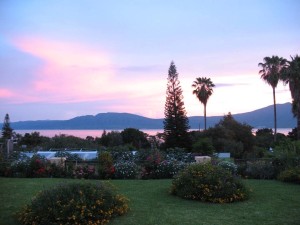
Oh, did I forget to mention beauty? It doesn’t begin with a “C”. Let’s see, perhaps charisma? Here’s a view from my backyard during a frequent sunset. How much better can it get? That makes five and a half reasons to consider retirement in Ajijic or Chapala.
